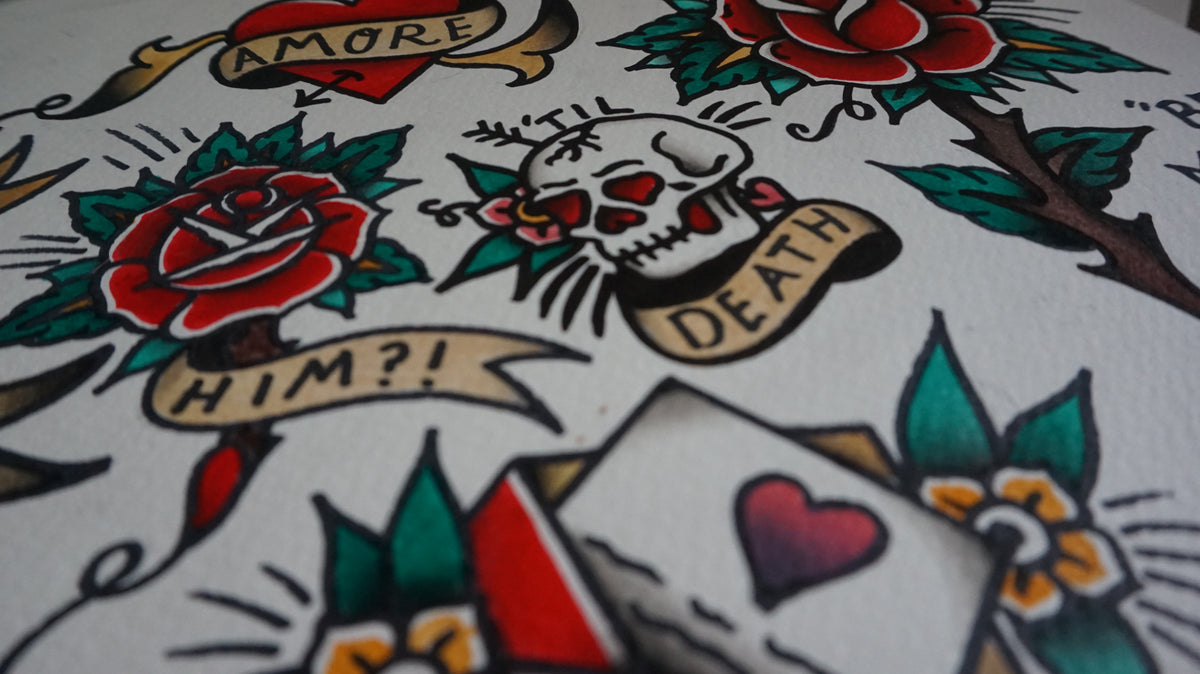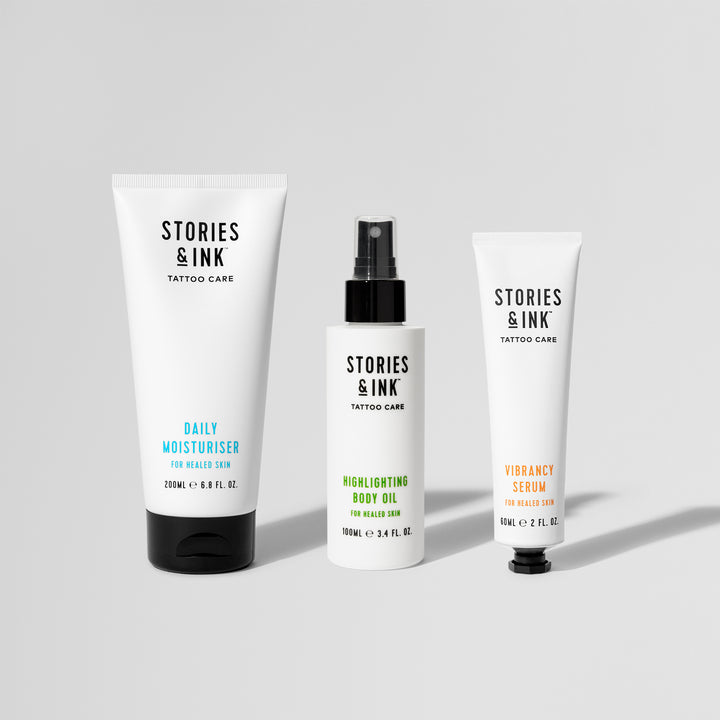Recognised as one of the most popular and easily recognisable styles in modern day culture, traditional tattoos possess a rich history. Pinpointing the exact origin of the style to one particular country is tricky; historical evidence indicates that multiple regions of the world contributed to traditional tattooing as we know it today. A popular rumour holds Captain James Cook’s crew responsible for discovering tattooing and the introduction of work from the East to the West. This likely stems from the fact that, as travellers, the tattoos represented their voyages to ‘foreign lands’ such as Japan, China and the Pacific Islands.
Although commonplace now, being tattooed 200 years ago would have been extremely rare and reserved for the likes of sailors and those in the military. Breaking out of the all-American idea of normality, those from the West were introduced to trad tattoos whilst serving in the military in Asia and the Pacific Islands. Norman Collins - or Sailor Jerry, as we know him - was a heavily inked former Navy man. Later in his life, his apprentice - Don Ed Hardy - also contributed to raising awareness of the style now known as ‘traditional’. Both artists created a whole new look that was inspired by the work carried out by Japanese tattoo masters and - when combined - their methodology and American-inspired artwork created bolder, more refined pieces.
The style managed to gain even more attention with the invention of the electric tattoo machine in 1891 by Samuel O'Reilly. This was helped along by a man known as ‘Lew the Jew’, or Lew Alberts, who coined what we now know as flash sheets in 1905. Fast-forward to the 50s and 60s and getting tattooed was a way to show that you belonged to certain outlawed groups, or believed in a form of counterculture. Committing to permanently marking your skin was a way to show your affiliation with certain groups or ideologies, denouncing the normality society expected from you at the time. Moving into the 70s and 80s, if you were heavily tattooed and pierced, you were effectively giving society the middle finger, showing your allegiance to a punk mentality.
Old School tattoo characteristics
Old school tattoos often feature bold, carbon-black line work. This is most likely a nod to Polynesian and Native American roots which feature similar elements in their native pieces. In terms of a colour palette, the pigments used were - to put it bluntly - whatever was available at the time. Although the offering is now much broader, artists continue to opt for reds, blues and yellows in line with the traditional style, and because of their ability to remain vivid for longer. With the majority of pieces, shading is kept to a minimum and the pieces are filled out with blocks of colour which also add to the longevity of a piece. When combined, the colour and linework mean that the style looks good on all skin tones, standing out against varying backdrops.
When it comes to themes, traditional tattoos usually exist to tell a story. Whether that’s how far a sailor has travelled shown through his swallows, or a nod to Irezumi through a brilliant dragon piece, there are certain motifs that are easily identifiable as traditional tattoo designs. These often include traditional panthers, snakes, anchors and eagles - as well as pin-up girls, crosses and roses.
Notable Traditional Tattoo Artists
In addition to the trailblazers of traditional tattooing mentioned earlier, there are a number of modern day artists who have propelled the style into mainstream culture. Michelle Myles opened Daredevil Tattoo in New York City in 1997 after tattooing was finally legalized there. The studio still remains open with a roster of internationally-renowned artists alongside a bank of historical objects relating to the city’s history of tattooing. 

Source: Reddit
Caring for traditional tattoos
As with any new tattoo, taking good care of it is essential. With traditional tattoos - especially those that feature blocks of colour - the healing process will involve a considerable amount of scabbing. Resisting the urge to pick at these scabs will ensure that the piece stays vivid and crisp rather than patchy and uneven. If holidaying, keeping the work out of direct sunlight can also help to maintain its freshness.
Moisturising the skin with something gentle is also recommended to keep the piece looking new and hydrated. Treating it to an enhancing product such as our Overnight Vibrancy Serum will also provide the colours and linework with a new lease of life, allowing the colours to appear more lively and revitalised. To really allow your work to take centrestage, choosing an oil that highlights pigment such as our Highlighting Body Oil will help to keep traditional pieces looking their best.

